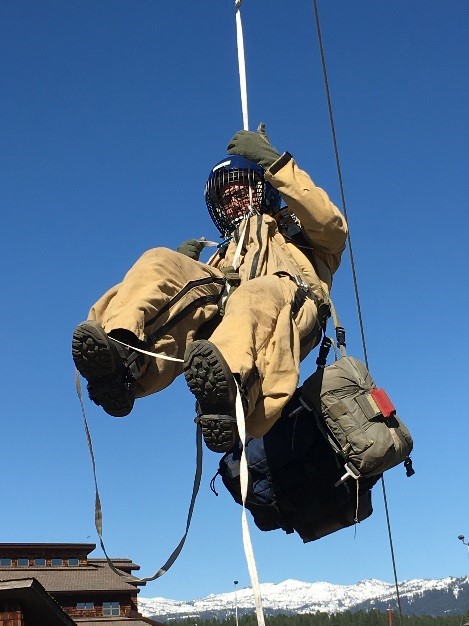McCall Smokejumper Base Equipment

The loft in McCall has the equipment necessary to fabricate the packs, jumpsuits, harnesses and many other things used on the job. The transition from the FS-14 canopy (round) to the RAM Air canopy began in 2016. The RAM Air canopy is rectangular with higher forward speed, allowing it to perform better in high wind conditions. Each season there will be a group of smokejumpers that go through the RAM Air Transition Training (RATT) until the entire base has transitioned. The training is intensive and covers rigging, aircraft exiting, malfunction procedures, PLF (parachute landing falls) and canopy manipulation.
Paracargo is the main way that smokejumpers deliver ordered equipment to the field. The cargo is packaged, weighed and loaded onto the aircraft and flown toward its destination. The pilots and spotters communicate with ground resources and “kick” the boxes strapped with cargo parachutes to a determined cargo spot. The cargo floats softly to the ground where the ground resources collect it and open the packages. Chainsaws, pumps and hose, fuel, satellite phones and food are just a few of the items that have been delivered via paracargo. Fresh food can be delivered in the field to feed many firefighters, each meal costing less than the standard MRE (meal ready to eat).

